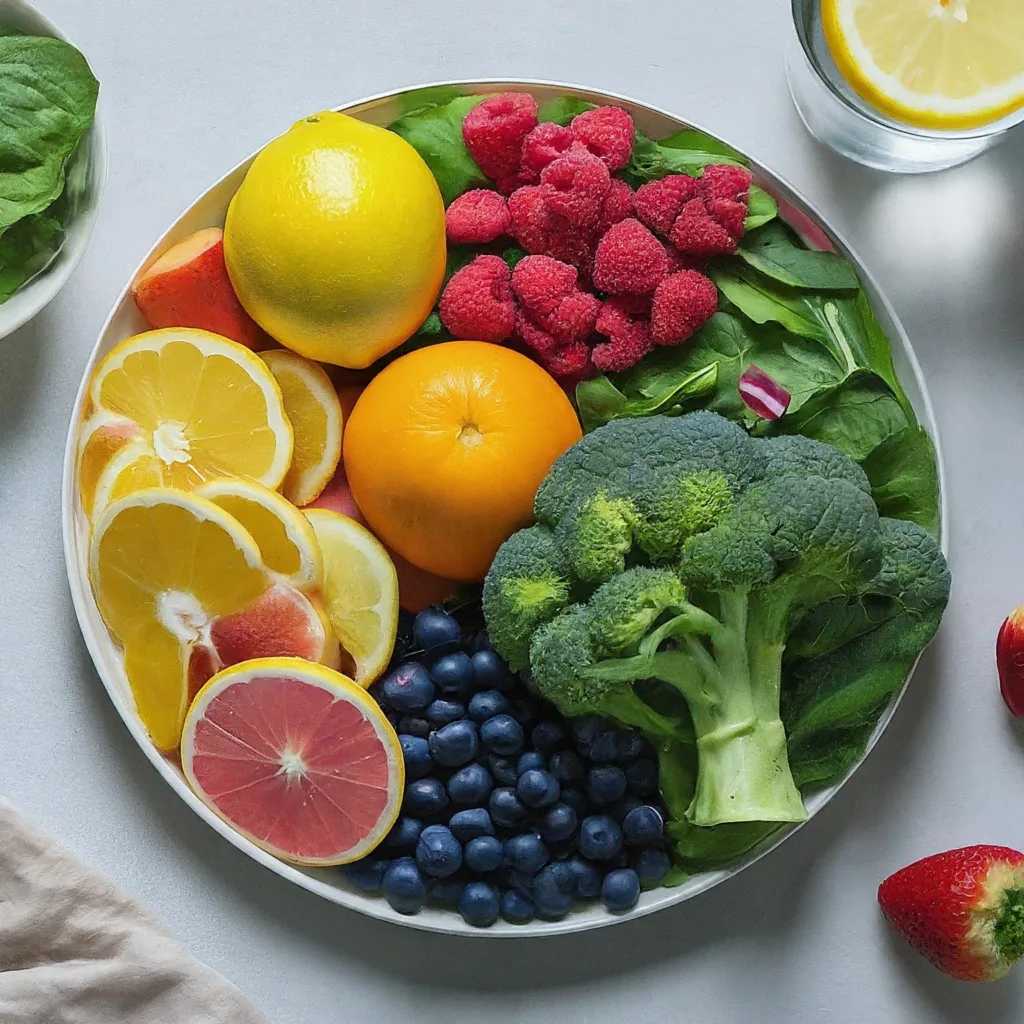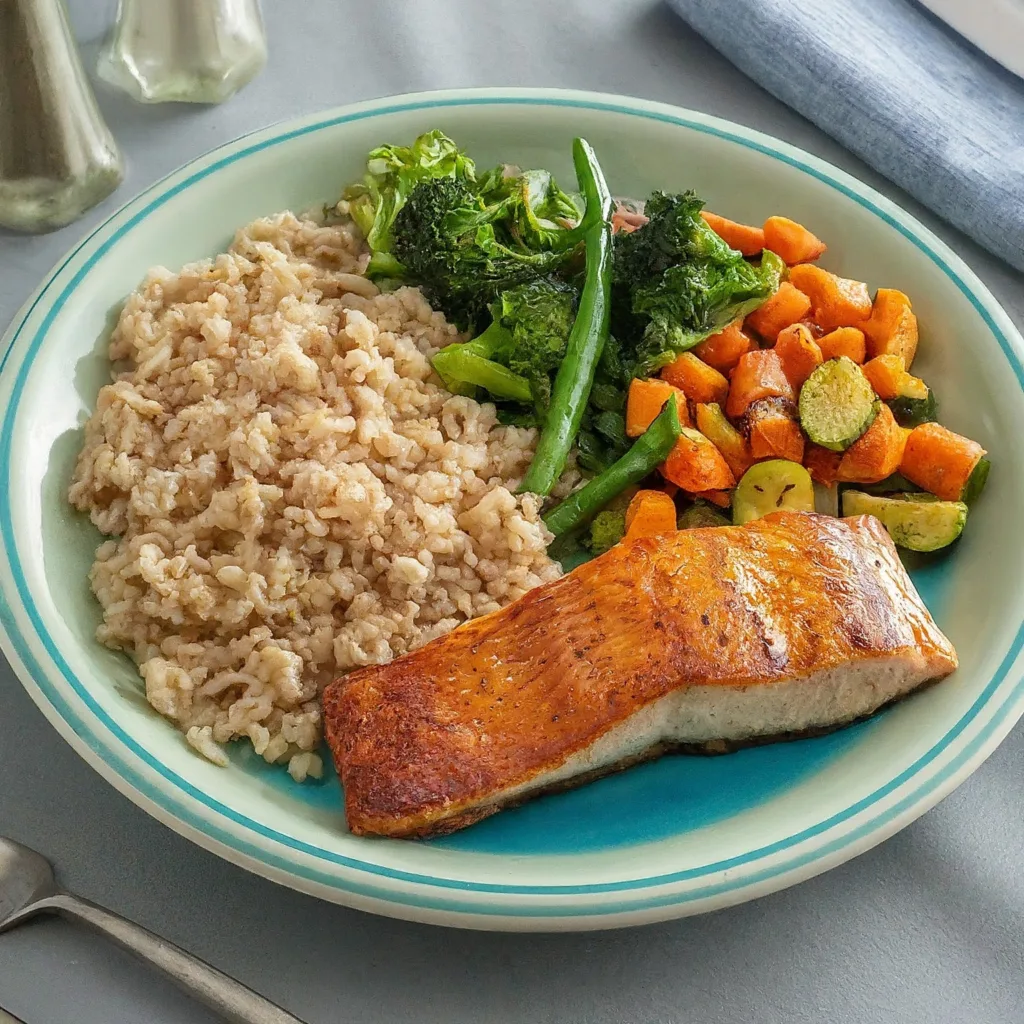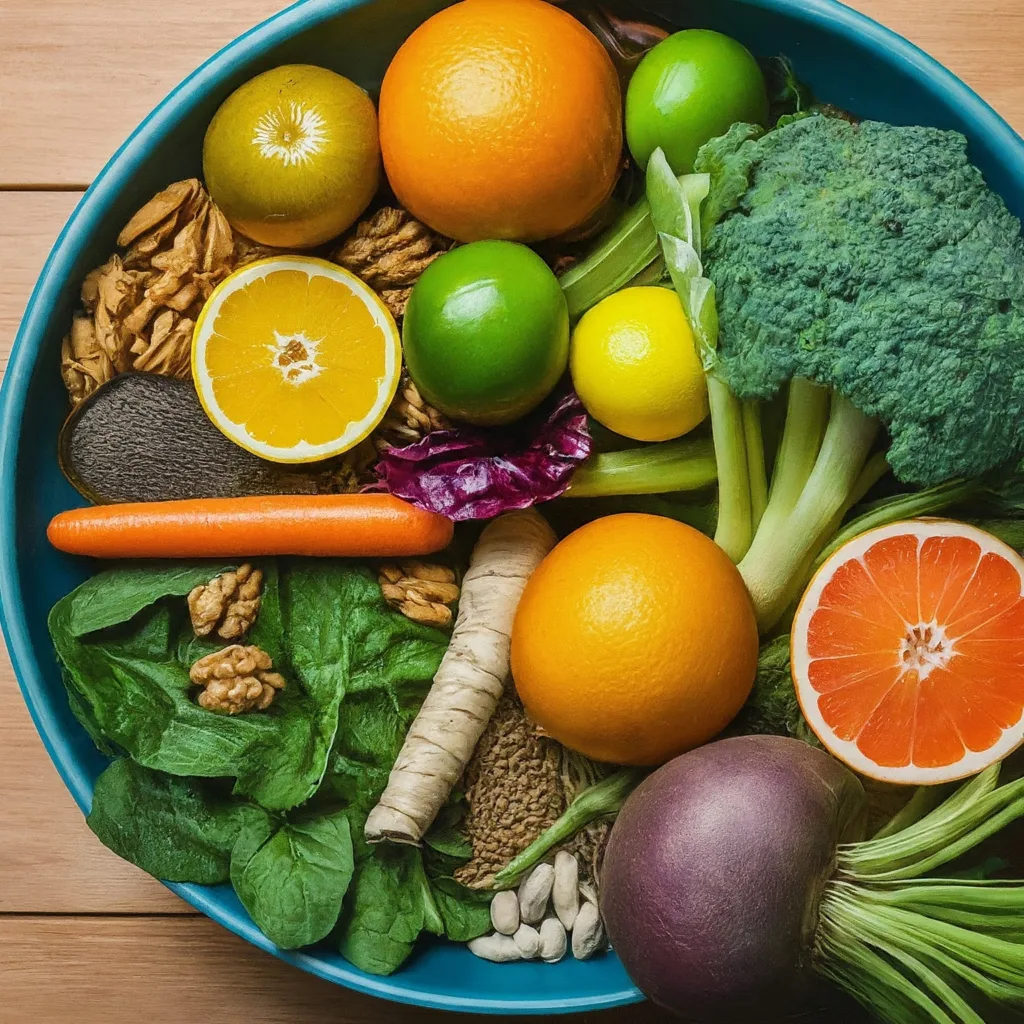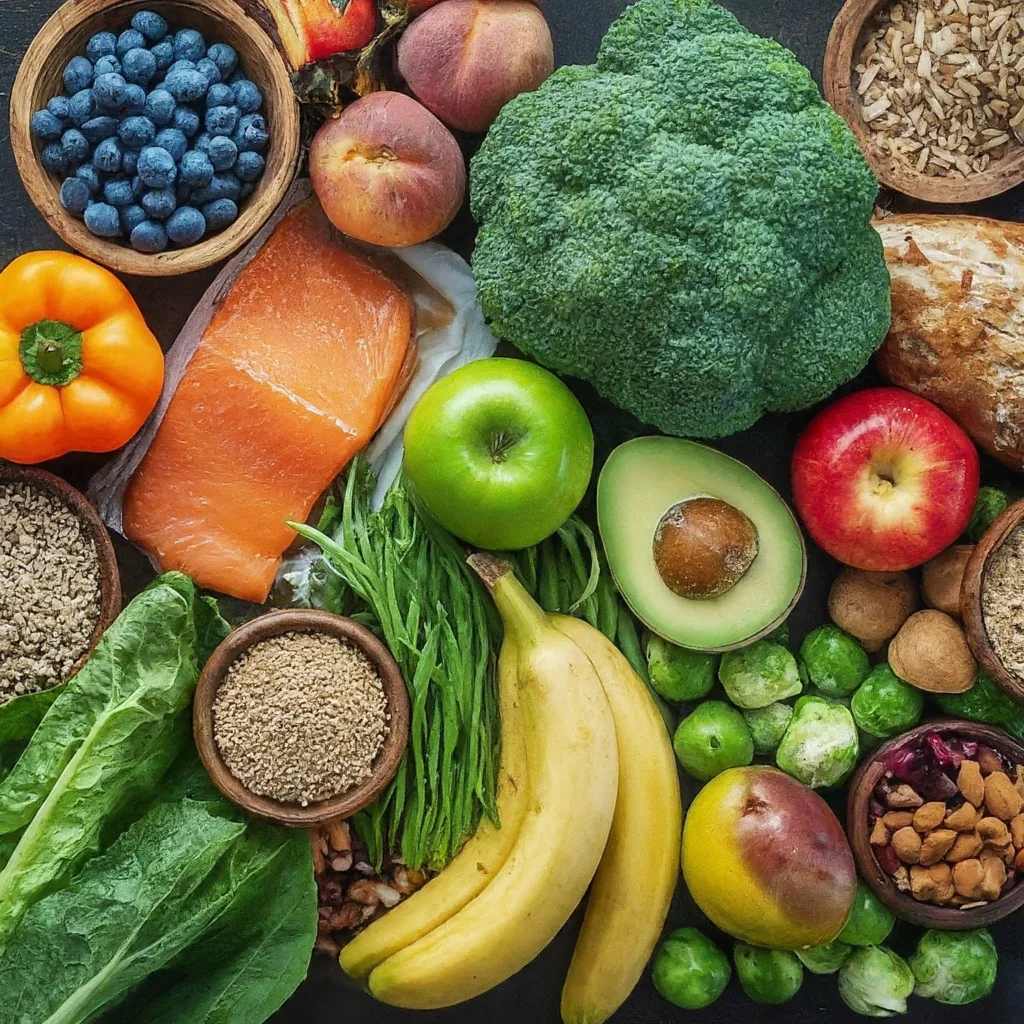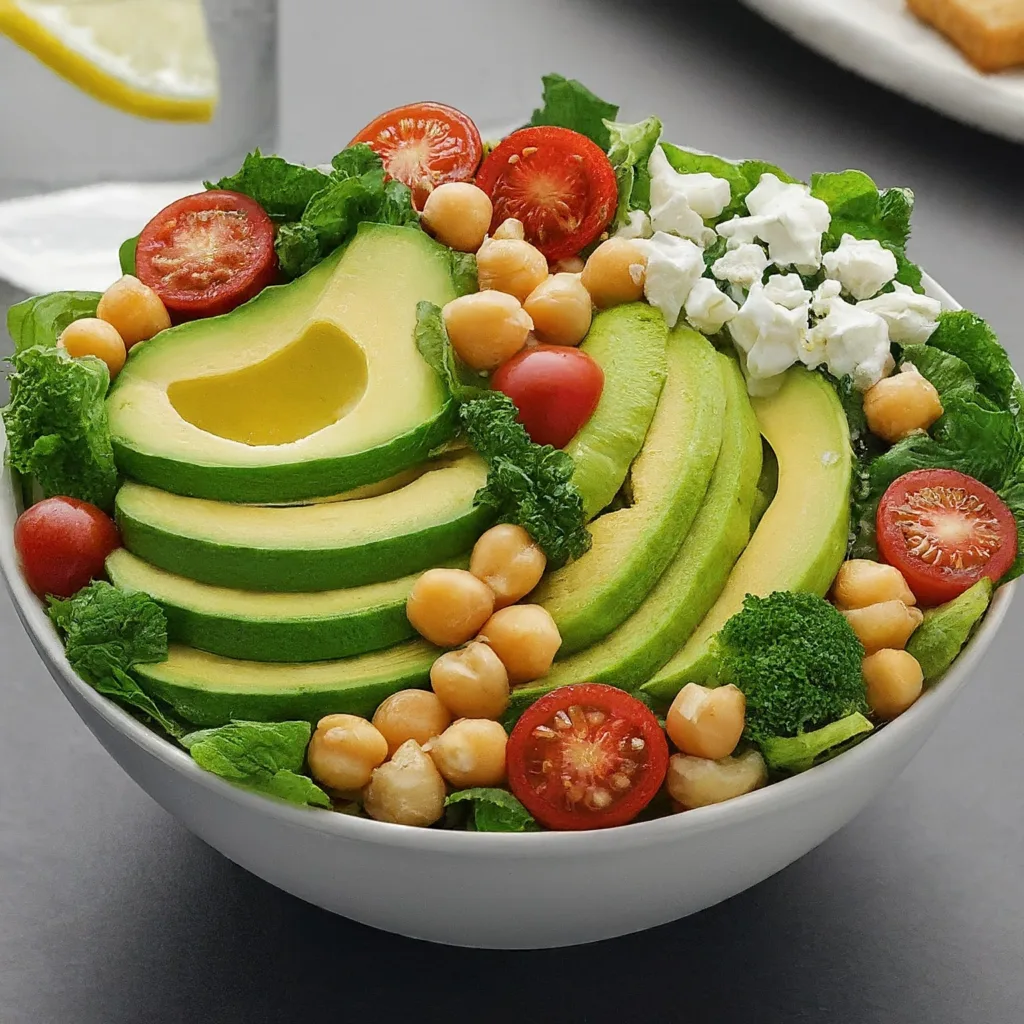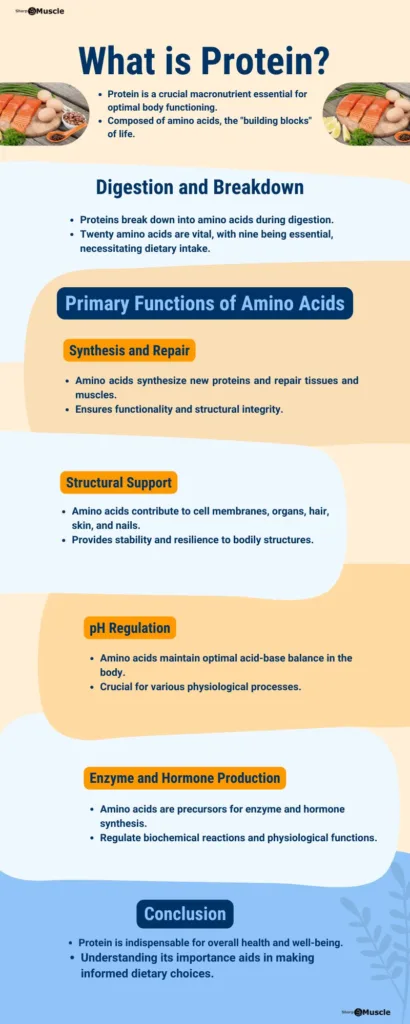Green vs. Red vs. Black Grapes – which one is the best for your health? This is a common question that many people ask when considering which type of grape to add to their diet. Grapes are a popular fruit that offer a range of health benefits, but the different colors may offer unique nutritional advantages.
In this article, we will explore the nutritional differences and potential drawbacks of green, red, and black grapes, as well as their potential impact on specific health conditions. Whether you’re looking to improve your heart health, boost your immune system, or simply enjoy a delicious snack, read on to discover the benefits of each type of grape and which one may be the best fit for your needs.
Information
| Aspect | Green Grapes | Red Grapes | Black Grapes |
|---|---|---|---|
| Appearance | Small, round, green skin | Small, round, red/purple skin | Small, round, dark purple/black skin |
| How they’re used | Raw, in salads, juices, or as a garnish | Raw, in salads, juices, or as a garnish | Raw, in salads, juices, or as a garnish |
| Contains seeds/pits? | Usually contain small, edible seeds | May contain small, edible seeds | Usually contain small, edible seeds |
| Health benefits | May help with weight loss, good source of vitamin K and C | May help with heart health, good source of resveratrol | May help with immune system function, good source of anthocyanins |
| Nutritional benefits | Low in calories, high in fiber, antioxidants, and potassium | Low in calories, high in fiber, antioxidants, and vitamin C | Low in calories, high in fiber, antioxidants, and vitamin K |
| Origination | Native to Asia and Europe | Native to Asia and Europe | Native to the Mediterranean and Middle East |
| Difference in taste | Crisp, slightly tart, and mildly sweet | Sweet, juicy, and slightly tangy | Rich, sweet, and slightly tart |
| Storage & Shelf Life | Refrigerate for up to a week | Refrigerate for up to a week | Refrigerate for up to a week |
| Pet Safety | Avoid feeding to pets due to potential choking hazard | Avoid feeding to pets due to potential choking hazard | Avoid feeding to pets due to potential choking hazard |
Health benefits of different types of grapes
Research suggests that consuming grapes or grape products may offer a range of health benefits, regardless of the variety of grape. However, the specific health benefits may vary depending on the type of grape and the concentration of specific nutrients and antioxidants.
Incorporating a variety of colorful fruits, including green, black, and red grapes, into a balanced diet can provide a range of essential nutrients and contribute to overall health and wellness.
Here is a review of some of the research on the health benefits of different types of grapes:
Green Grapes
Green grapes are an excellent source of vitamin C, which plays a vital role in immune function, collagen production, and iron absorption.
They are also a good source of vitamin K, which is essential for blood clotting and bone health, and potassium, which helps regulate blood pressure and supports heart health.
It has shown that consuming green grapes or grape products may have a range of health benefits, including:
- Reducing blood pressure: A study published in the British Journal of Nutrition found that consuming green grape juice for eight weeks reduced systolic blood pressure in individuals with pre-hypertension. 1
- Improving cognitive function: A study published in the Journal of Agricultural and Food Chemistry found that consuming grape seed extract improved cognitive function in healthy adults. 2
- Supporting digestive health: A study published in the Journal of Medicinal Food found that grape seed extract improved symptoms of irritable bowel syndrome in rats. 3
Black Grapes
Black grapes are rich in antioxidants, particularly anthocyanins, which give them their dark color. These antioxidants have been linked to a range of health benefits, including reducing inflammation, improving cardiovascular health, and protecting against certain types of cancer.
Black grapes also contain resveratrol, another antioxidant that has been shown to have anti-inflammatory properties and may help reduce the risk of chronic diseases like diabetes and Alzheimer’s.
Research has shown that consuming black grapes or grape products may have a range of health benefits, including:
- Reducing inflammation: A study published in the Journal of Agricultural and Food Chemistry found that consuming black grape juice reduced inflammation markers in individuals with metabolic syndrome. 4
- Improving cardiovascular health: A study published in the American Journal of Clinical Nutrition found that consuming grape seed extract improved blood flow and reduced markers of oxidative stress in individuals with coronary artery disease. 5
- Protecting against cancer: A study published in the Journal of Nutrition found that consuming grape seed extract reduced the growth of colon cancer cells in rats. 6
Red Grapes
Red grapes are an excellent source of antioxidants, including resveratrol and flavonoids, which have been shown to have anti-inflammatory and anti-cancer properties.
In particular, resveratrol has been found to improve cardiovascular health by reducing inflammation, lowering blood pressure, and improving blood flow.
It has shown that consuming red grapes or grape products may have a range of health benefits, including:
- Improving cardiovascular health: A study published in the Journal of Nutrition found that consuming red grape juice improved blood flow and reduced markers of oxidative stress in healthy adults. 5 7
- Protecting against cancer: A study published in the Journal of Agricultural and Food Chemistry found that consuming red grape juice reduced the growth of breast cancer cells in mice. 8 9
- Supporting cognitive function: A study published in the Journal of Agricultural and Food Chemistry found that consuming red grape juice improved cognitive function in healthy older adults. 10
Green vs. Red vs. Black Grapes
There are many varieties of grapes, including green, black, and red grapes, each with its own unique flavor and nutritional benefits.
Let’s take a closer look at the differences between green, black, and red grapes, and explore the reasons why you might choose one over the other.
Green Grapes
Green grapes are perhaps the most recognizable variety of grape, with their light green color and distinctive sweet and slightly tart flavor. They are also sometimes called white grapes, although this is technically incorrect, as they are not white in color. Green grapes are a good source of vitamin C and dietary fiber, as well as other important nutrients such as potassium and vitamin K.
One of the reasons that many people prefer green grapes over other varieties is their versatility. They can be eaten fresh or used in a wide range of recipes, from salads and desserts to juices and smoothies. They are also a popular ingredient in many types of wine, particularly white wine, which is made from the juice of green grapes.
Another reason to choose green grapes is their relatively low sugar content compared to other varieties. This can be an important consideration for people who are watching their sugar intake, such as those with diabetes or other health conditions.
Black Grapes
Black grapes, also known as purple grapes, are a darker, more intense variety of grape that is known for its deep, rich flavor. They are also a good source of antioxidants, which can help protect your body from free radicals and other harmful substances.
Black grapes are often used in winemaking, particularly for red wine, as the skins of the grapes contain tannins that give the wine its characteristic color and flavor. They are also a popular ingredient in a range of recipes, from savory dishes like stews and roasts to sweet treats like cakes and tarts.
One of the benefits of black grapes is their high anthocyanin content. Anthocyanins are a type of antioxidant that has been linked to a range of health benefits, including reduced inflammation and improved cardiovascular health. Black grapes are also a good source of other important nutrients, including vitamin C, vitamin K, and potassium.
Red Grapes
Red grapes, as the name suggests, are a vibrant shade of red or reddish-purple. They are similar in flavor and texture to black grapes, although they tend to be slightly sweeter and less intense. Red grapes are a good source of antioxidants, including resveratrol, which has been linked to a range of health benefits.
Like black grapes, red grapes are often used in winemaking, particularly for red wine. They are also a popular ingredient in a range of dishes, from salads and sandwiches to desserts and snacks. One of the benefits of red grapes is their high fiber content, which can help improve digestion and promote feelings of fullness.
Choosing Between Green, Black, and Red Grapes
Each variety has its unique flavor and characteristics that make them appealing. Green grapes tend to be the sweetest and have a crisp texture, while black grapes are slightly less sweet with a chewy texture. Red grapes fall somewhere in the middle with a balance of sweetness and firmness.
Apart from taste and texture, each type of grape also has its own set of health benefits. Green grapes are a good source of vitamins C and K, while black grapes contain high levels of antioxidants. Red grapes have been found to have anti-inflammatory properties and may help reduce the risk of heart disease.
Ultimately, the best grape for you depends on your personal preferences and dietary needs. Whether you prefer the sweetness of green grapes or the chewiness of black grapes, all types of grapes offer a variety of health benefits that make them a great addition to any diet.
What expert says
There are many nutrition and health experts who have researched the benefits of different grape varieties and may have varying opinions on which is the healthiest.
Some experts may argue that black grapes are the healthiest due to their high levels of antioxidants, particularly anthocyanins and resveratrol, which have been linked to a range of health benefits, including reducing inflammation, improving cardiovascular health, and protecting against certain types of cancer. These antioxidants are also thought to help protect against oxidative stress, which can lead to cellular damage and contribute to chronic diseases.
Others may argue that green grapes are the healthiest due to their lower calorie and sugar content and high levels of vitamin C and potassium. Vitamin C is a powerful antioxidant that supports immune function and collagen production, while potassium helps regulate blood pressure and supports heart health.
Finally, some experts may claim that red grapes are the healthiest due to their high levels of resveratrol, which has been found to improve cardiovascular health by reducing inflammation, lowering blood pressure, and improving blood flow. Red grapes are also high in dietary fiber, which supports digestive health and helps regulate blood sugar levels.
Green vs. Red vs. Black Grapes Nutrition Facts
After exploring the distinct characteristics between red and black grapes, it’s time to evaluate their nutritional value.
The following chart provides a side-by-side analysis of the nutrition facts for seedless grapes, with a serving size of 1 cup, comparing the nutritional content of green, red, and black grapes.
Serving Size: 1 cup, seedless
| Nutrient | Green Grapes | Red Grapes | Black Grapes |
|---|---|---|---|
| Calories | 104 | 104 | 104 |
| Fat | 0.2g | 0.2g | 0.2g |
| Sodium | 2mg | 2mg | 2mg |
| Carbohydrates | 27.3g | 27.3g | 27.3g |
| Fiber | 1.4g | 1.4g | 1.4g |
| Sugar | 23.4g | 23.4g | 23.4g |
| Protein | 1.1g | 1.1g | 1.1g |
| Vitamin C | 16.3mg | 16.3mg | 16.3mg |
| Vitamin K | 22.5mcg | 22.5mcg | 22.5mcg |
| Thiamin | 0.1mg | 0.1mg | 0.1mg |
| Riboflavin | 0.1mg | 0.1mg | 0.1mg |
| Niacin | 0.6mg | 0.6mg | 0.6mg |
| Vitamin B6 | 0.1mg | 0.1mg | 0.1mg |
| Folate | 4.2mcg | 4.2mcg | 4.2mcg |
| Calcium | 15mg | 15mg | 15mg |
| Iron | 0.5mg | 0.5mg | 0.5mg |
| Magnesium | 8.9mg | 8.9mg | 8.9mg |
| Phosphorus | 24.8mg | 24.8mg | 24.8mg |
| Potassium | 288mg | 288mg | 288mg |
| Zinc | 0.1mg | 0.1mg | 0.1mg |
| Copper | 0.1mg | 0.1mg | 0.1mg |
| Manganese | 0.1mg | 0.1mg | 0.1mg |
| Selenium | 0.2mcg | 0.2mcg | 0.2mcg |
| Omega-3 Fatty Acids | 5.5mg | 5.5mg | 5.5mg |
| Omega-6 Fatty Acids | 16.5mg | 16.5mg | 16.5mg |
Creative Ways to Incorporate Grapes into Your Diet
Grapes can be enjoyed in a variety of ways beyond just eating them raw. Whether you’re looking for a way to use up a surplus of grapes or simply want to add some variety to your diet, there are plenty of creative ways to incorporate grapes into your meals and snacks.
One simple way to use grapes is to add them to a fruit salad or smoothie. You can also slice them and add them to a green salad for a burst of flavor and texture. Grapes can also be roasted and served as a side dish or added to a sandwich or wrap for some extra crunch.
If you’re feeling more adventurous, try making a grape salsa to serve with tortilla chips or as a topping for grilled chicken or fish. Grapes can also be cooked down into a jam or chutney to serve with cheese or crackers.
When it comes to baking, grapes can be a surprising addition to many desserts. They can be baked into cakes, muffins, and breads, or used as a topping for tarts and pies.
Incorporating grapes into your diet can not only add variety and flavor to your meals, but can also provide a range of nutritional benefits. So the next time you’re looking for a new way to enjoy this delicious fruit, consider trying one of these creative ideas.
Grapes-Based Recipes for Breakfast, Lunch, and Dinner
Grapes are a versatile and delicious fruit that can be incorporated into any meal of the day. From sweet to savory dishes, grapes can add a unique flavor and texture to breakfast, lunch, and dinner.
Here are the six grapes-based recipes that you can try at each meal:
Breakfast
Grape and Yogurt Parfait
Layer plain Greek yogurt, sliced grapes, and granola in a jar for a tasty and healthy breakfast on-the-go.
Ingredients:
- 1 cup Greek yogurt
- 1 cup green or red grapes, halved
- 1/4 cup granola
- 1 tbsp honey
Instructions:
- In a small bowl, mix together the yogurt and honey.
- In a glass or jar, layer the yogurt mixture, grapes, and granola.
- Repeat the layers until you reach the top of the glass.
- Top with additional grapes and granola, if desired.
- Serve immediately or refrigerate until ready to eat.
Grape and Ricotta Toast
Toast a slice of whole grain bread and top it with ricotta cheese and sliced grapes for a quick and easy breakfast.
Ingredients:
- 2 slices of whole wheat bread
- 1/2 cup ricotta cheese
- 1/2 cup red or black grapes, halved
- 1 tsp honey
- Salt and pepper, to taste
Instructions:
- Toast the bread until crispy.
- Spread the ricotta cheese over the toast.
- Top with halved grapes.
- Drizzle honey over the grapes.
- Sprinkle with salt and pepper.
- Serve immediately.
Lunch
Grape and Chicken Salad
Mix chopped chicken, sliced grapes, diced celery, and a dollop of mayonnaise for a simple and satisfying lunch salad.
Ingredients:
- 2 cups cooked chicken, diced
- 1 cup red grapes, halved
- 1/2 cup celery, diced
- 1/4 cup red onion, diced
- 1/4 cup slivered almonds
- 1/2 cup plain Greek yogurt
- 1 tbsp honey
- Salt and pepper, to taste
Instructions:
- In a large bowl, combine the chicken, grapes, celery, red onion, and almonds.
- In a small bowl, whisk together the yogurt, honey, salt, and pepper.
- Pour the dressing over the chicken mixture and toss to coat.
- Serve immediately or refrigerate until ready to eat.
Grape and Brie Quesadilla
Spread brie cheese and sliced grapes on a tortilla and cook it in a pan for a delicious and gourmet lunch option.
Ingredients:
- 2 flour tortillas
- 1/2 cup Brie cheese, sliced
- 1/2 cup red or black grapes, halved
- 2 tbsp honey
- 2 tbsp butter
Instructions:
- Heat a large skillet over medium heat.
- Spread Brie cheese over one half of each tortilla.
- Top with halved grapes.
- Drizzle honey over the grapes.
- Fold the tortilla in half to create a quesadilla.
- Melt butter in the skillet.
- Add the quesadilla to the skillet and cook for 2-3 minutes on each side, or until the cheese is melted and the tortilla is crispy.
- Slice and serve immediately.
Dinner
Grilled Pork Chops with Grape Salsa
Marinate pork chops in a mixture of olive oil and herbs, then grill them and serve them with a fresh grape salsa.
Ingredients:
- 4 pork chops
- 1 cup red grapes, halved
- 1/2 cup red onion, diced
- 1 jalapeño pepper, seeded and diced
- 1 lime, juiced
- 1 tbsp honey
- 1 tbsp olive oil
- Salt and pepper, to taste
Instructions:
- Preheat the grill to medium-high heat.
- In a small bowl, mix together the grapes, red onion, jalapeño pepper, lime juice, honey, olive oil, salt, and pepper.
- Grill the pork chops for 4-5 minutes on each side, or until they reach an internal temperature of 145°F (63°C).
- Serve the pork chops topped with the grape salsa.
Roasted Grape and Goat Cheese Pizza
Top a pre-made pizza crust with goat cheese, roasted grapes, and arugula for a unique and flavorful dinner.
Ingredients:
- 1 store-bought pizza crust
- 1/2 cup tomato sauce
- 1/4 cup crumbled goat cheese
- 1/4 cup shredded mozzarella cheese
- 1/2 cup roasted grapes
- 1/4 cup chopped walnuts
- 1 tbsp chopped fresh rosemary
- Salt and pepper to taste
Instructions:
- Preheat the oven to 425°F.
- Roll out the pizza crust onto a baking sheet.
- Spread the tomato sauce evenly over the crust.
- Sprinkle the crumbled goat cheese and shredded mozzarella cheese over the tomato sauce.
- Add the roasted grapes and chopped walnuts on top of the cheese.
- Sprinkle the chopped fresh rosemary, salt, and pepper over the pizza.
- Bake the pizza for 10-12 minutes, or until the crust is crispy and the cheese is melted and bubbly.
- Remove the pizza from the oven and let it cool for a few minutes before slicing and serving.
These grape-based recipes offer a range of flavors and nutritional benefits, including fiber, vitamins, and antioxidants. Incorporating grapes into your meals is an easy way to add variety and nutrition to your diet.
Grapes Smoothie Ideas for a Nutritious and Delicious Snack
Following grape smoothie ideas are quick and easy to make and are perfect for a nutritious and delicious snack on the go. Experiment with different combinations of grapes and other fruits and enjoy the refreshing taste of these smoothies!
Here are the four grape smoothie ideas that you can enjoy the health benefits of grapes in a refreshing and convenient way:
1. Grape and Banana Smoothie
Ingredients:
- 1 cup seedless green grapes
- 1 banana
- 1/2 cup vanilla Greek yogurt
- 1/4 cup almond milk
- 1 tbsp honey
- 1/4 tsp vanilla extract
Instructions:
- Combine all the ingredients into the blender and blend them until they are well-mixed and smooth in consistency.
- Pour into a glass and serve.
2. Mixed Berry and Grape Smoothie
Ingredients:
- 1/2 cup seedless red grapes
- 1/2 cup mixed berries (such as blueberries, raspberries, and strawberries)
- 1/2 cup vanilla Greek yogurt
- 1/4 cup almond milk
- 1 tbsp honey
- 1/4 tsp vanilla extract
Instructions:
- Combine all the ingredients into the blender and blend them until they are well-mixed and smooth in consistency.
- Pour into a glass and serve.
3. Grape and Spinach Smoothie
Ingredients:
- 1 cup seedless black grapes
- 1 cup spinach
- 1/2 cup vanilla Greek yogurt
- 1/4 cup almond milk
- 1 tbsp honey
- 1/4 tsp vanilla extract
Instructions:
- Combine all the ingredients into the blender and blend them until they are well-mixed and smooth in consistency.
- Pour into a glass and serve.
4. Grape and Pineapple Smoothie
Ingredients:
- 1 cup seedless green grapes
- 1 cup fresh pineapple chunks
- 1/2 cup vanilla Greek yogurt
- 1/4 cup almond milk
- 1 tbsp honey
- 1/4 tsp vanilla extract
Instructions:
- Combine all the ingredients into the blender and blend them until they are well-mixed and smooth in consistency.
- Pour into a glass and serve.
Green vs. Red vs. Black Grapes: In Summary
Grapes come in three main colors: green, red, and black. Each color may offer unique nutritional advantages.
| Topic | Key Points |
|---|---|
| Nutritional Differences | Green grapes are lower in calories and higher in vitamin K, while red and black grapes contain more antioxidants and may offer heart health benefits. |
| Green Grapes | May aid in weight loss, contain vitamin K and C, and have a crisp, slightly tart taste. |
| Red Grapes | May improve heart health, contain resveratrol, and have a sweet, juicy taste. |
| Black Grapes | May boost immune system function, contain anthocyanins, and have a rich, sweet taste. |
| Potential Drawbacks | Grapes may cause digestive issues in some people and can interact with certain medications. |
| Selecting and Storing Grapes | Choose grapes that are ripe and store them in the refrigerator for up to a week. |
| Creative Uses for Grapes | Grapes can be used in a variety of recipes, such as smoothies, salads, and main dishes. |
| Conclusion | All three colors of grapes offer health benefits and can be a delicious addition to your diet. Choose the color that best fits your nutritional needs and taste preferences. |
- Park E, Edirisinghe I, Choy YY, Waterhouse A, Burton-Freeman B. “Effects of grape seed extract beverage on blood pressure and metabolic indices in individuals with pre-hypertension: a randomised, double-blinded, two-arm, parallel, placebo-controlled trial.” Br J Nutr. 2016 Jan 28;115(2):226-38. doi: 10.1017/S0007114515004328. Epub 2015 Nov 16. PMID: 26568249.[↩]
- Bell L, Whyte AR, Lamport DJ, Spencer JPE, Butler LT, Williams CM. “Grape seed polyphenol extract and cognitive function in healthy young adults: a randomised, placebo-controlled, parallel-groups acute-on-chronic trial.” Nutr Neurosci. 2022 Jan;25(1):54-63. doi: 10.1080/1028415X.2019.1708033. Epub 2020 Jan 16. PMID: 31942838.[↩]
- Arie H, Nozu T, Miyagishi S, Ida M, Izumo T, Shibata H. “Grape Seed Extract Eliminates Visceral Allodynia and Colonic Hyperpermeability Induced by Repeated Water Avoidance Stress in Rats.” Nutrients. 2019 Nov 4;11(11):2646. doi: 10.3390/nu11112646. PMID: 31689935; PMCID: PMC6893525.[↩]
- Barona J, Blesso CN, Andersen CJ, Park Y, Lee J, Fernandez ML. “Grape consumption increases anti-inflammatory markers and upregulates peripheral nitric oxide synthase in the absence of dyslipidemias in men with metabolic syndrome.” Nutrients. 2012 Dec 6;4(12):1945-57. doi: 10.3390/nu4121945. PMID: 23222963; PMCID: PMC3546615.[↩]
- Clifton PM. “Effect of Grape Seed Extract and Quercetin on Cardiovascular and Endothelial Parameters in High-Risk Subjects.” J Biomed Biotechnol. 2004;2004(5):272-278. doi: 10.1155/S1110724304403088. PMID: 15577189; PMCID: PMC1082891.[↩][↩]
- Kaur M, Agarwal C, Agarwal R. “Anticancer and cancer chemopreventive potential of grape seed extract and other grape-based products.” J Nutr. 2009 Sep;139(9):1806S-12S. doi: 10.3945/jn.109.106864. Epub 2009 Jul 29. PMID: 19640973; PMCID: PMC2728696.[↩]
- Keshavarzi A, Seifikar S, Ranjbar A, Khiripour N, Ghaleiha A, et al. “Effect of fresh red grape juice and grape fermentative product on oxidative-stress in human erythrocytes in vitro.” Arch Biotechnol Biomed. 2022; 6: 001-006. DOI: 10.29328/journal.abb.1001030.[↩]
- Mancini M, Cerny MEV, Cardoso NS, Verissimo G, Maluf SW. “Grape Seed Components as Protectors of Inflammation, DNA Damage, and Cancer.” Curr Nutr Rep. 2023 Mar;12(1):141-150. doi: 10.1007/s13668-023-00460-5. Epub 2023 Jan 24. PMID: 36692807.[↩]
- Zhou K, Raffoul JJ. “Potential anticancer properties of grape antioxidants.” J Oncol. 2012;2012:803294. doi: 10.1155/2012/803294. Epub 2012 Aug 7. PMID: 22919383; PMCID: PMC3420094.[↩]
- Haskell-Ramsay CF, Stuart RC, Okello EJ, Watson AW. “Cognitive and mood improvements following acute supplementation with purple grape juice in healthy young adults.” Eur J Nutr. 2017 Dec;56(8):2621-2631. doi: 10.1007/s00394-017-1454-7. Epub 2017 Apr 20. Erratum in: Eur J Nutr. 2017 Oct 6;: PMID: 28429081; PMCID: PMC5682870.[↩]



